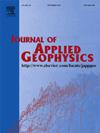Intelligent recognition of boulders in shield tunnels based on GPR dataset optimization using SE-EMD-WTD
IF 2.2
3区 地球科学
Q2 GEOSCIENCES, MULTIDISCIPLINARY
引用次数: 0
Abstract
Coastal urban strata containing numerous boulders that significantly affects shield-tunneling construction. In addition, urban environments are characterized by high noise levels, making the interpretation of ground-penetrating radar (GPR) images challenging. This paper proposes a combined denoising method based on the Shannon entropy (SE) theory, integrating empirical-mode decomposition (EMD) and wavelet-Threshold denoising (WTD). The feasibility of using deep-learning methods to identify solitary rocks was validated using a shallow convolutional neural network (CNN). Subsequently, transfer-learning and data-augmentation strategies were employed to optimize the Faster Region-based (R-)CNN. Finally, validation was performed using onsite GPR data. The results showed that the signal-to-noise ratio (SNR) of the GPR images denoised using the SE-EMD-WTD algorithm increased by 45.43 % compared with EMD and by 27.84 % compared with WTD. The root-mean-square error (RMSE) decreased by 35.32 % compared with EMD and by 19.37 % compared with WTD. Shallow CNN achieved a final recognition accuracy of 92.6 % on the GPR image-validation dataset. In actual engineering practice, boulder-recognition results based on the Faster R-CNN were consistent with the drilling results.
求助全文
约1分钟内获得全文
求助全文
来源期刊

Journal of Applied Geophysics
地学-地球科学综合
CiteScore
3.60
自引率
10.00%
发文量
274
审稿时长
4 months
期刊介绍:
The Journal of Applied Geophysics with its key objective of responding to pertinent and timely needs, places particular emphasis on methodological developments and innovative applications of geophysical techniques for addressing environmental, engineering, and hydrological problems. Related topical research in exploration geophysics and in soil and rock physics is also covered by the Journal of Applied Geophysics.
 求助内容:
求助内容: 应助结果提醒方式:
应助结果提醒方式:


